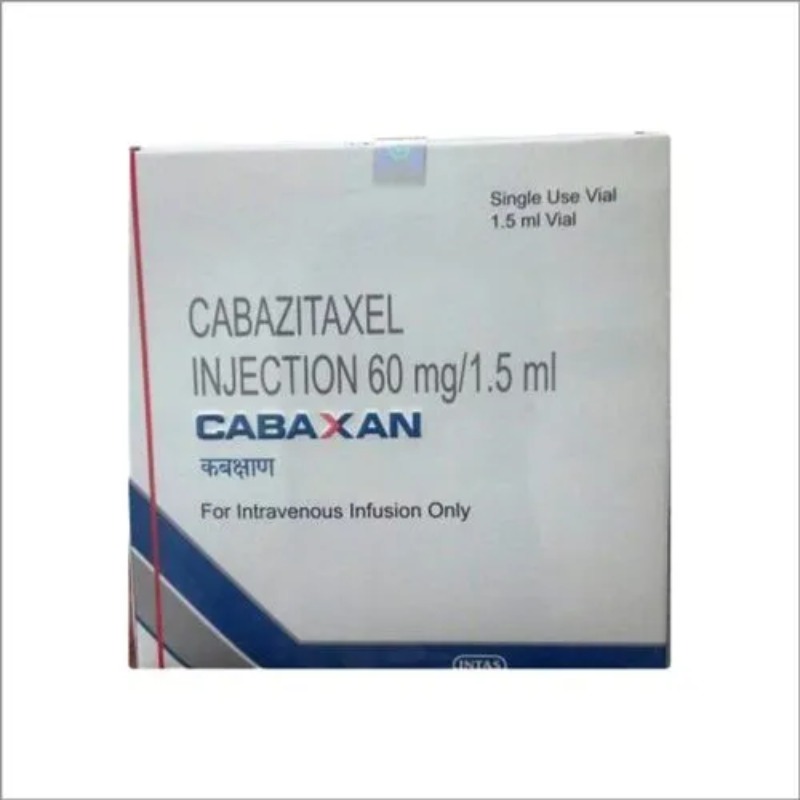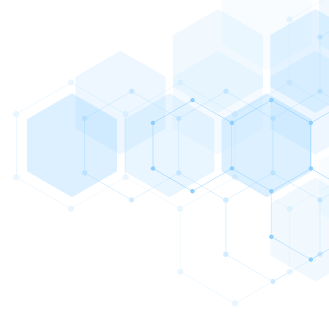DESCRIPTION
Cabazitaxel
CLASSIFICATION
Taxane, anti microtubule agent
MECHANISM OF ACTION
• Semisynthetic taxane prepared with a precursor extracted from yew needles.
• Binds to tubulin and promotes its assembly into microtubules while simultaneously inhibiting disassembly. This effect leads to stabilization of microtubules, which results in the inhibition of mitotic and interphase
cellular functions.
• Cell cycle–specific agent with activity in the mitotic (M) phase.
MECHANISM OF RESISTANCE
• Alterations in tubulin with decreased affinity for drug.
• Unlike other taxanes, cabazitaxel is a poor substrate for the multidrug-resistance P-glycoprotein efflux pump and may be useful
for treating multidrug-resistant tumors.
ABSORPTION
Administered only by the IV route. It is poorly soluble and not orally bioavailable.
DISTRIBUTION
Cabazitaxel distributes widely to all body tissues and penetrates the blood-brain barrier. Extensive binding (89%–92%) to plasma proteins.
INDICATIONS
FDA-approved in combination with prednisone for the treatment of patients with hormone-refractory, metastatic prostate cancer previously treated with a docetaxel-containing treatment regimen.
DOSAGE RANGE
Recommended dose is 20 mg/m2 as a 1-hour infusion every 3 weeks in combination with oral prednisone 10 mg administered daily throughout cabazitaxel treatment. A higher dose of 25 mg/m2 may be considered in certain select patients.
DRUG INTERACTION 1
Concomitant administration of CYP3A4 inhibitors such as ketoconazole, itraconazole, clarithromycin, atazanavir, indinavir, nefazodone, nelfinavir, ritonavir, saquinavir, telithromycin, and voriconazole may reduce cabazitaxel metabolism, resulting in increased plasma drug concentrations.
DRUG INTERACTION 2
Concomitant administration of CYP3A4 inducers such as phenytoin, carbamazepine, rifampin, phenobarbital, and St. John’s Wort may enhance cabazitaxel metabolism, resulting in decreased plasma drug concentrations and potentially reduced clinical activity.
SPECIAL CONSIDERATIONS
1. Contraindicated in patients with history of severe hypersensitivity reactions to cabazitaxel or to other drugs formulated with polysorbate 80.
2. Closely monitor CBCs on a weekly basis during cycle 1 and before each treatment cycle thereafter. Contraindicated in patients with severe neutropenia (i.e., ANC < 1,500 cells/mm3). Prophylaxis with G-CSF should be considered in patients with high-risk clinical features (age > 65, poor performance status, poor nutritional status, extensive prior radiation, other serious comorbid illnesses, or previous episodes of febrile neutropenia).
3. Patients should receive premedication with IV doses of an antihistamine, corticosteroid, and an H2-antagonist to prevent the incidence of hypersensitivity reactions.
4. Patients with a history of severe hypersensitivity reactions should NOT be
rechallenged with cabazitaxel.
5. Contraindicated in patients with hepatic dysfunction (total
bilirubin = ULN, AST and/or ALT = 1.5 × ULN). Use with caution in patients with abnormal liver function, as they are at higher risk for life- threatening toxicities.
6. Use with caution in patients with severe renal impairment and/or
end-stage renal disease. No differences in cabazitaxel clearance have been observed in patients with mild or moderate renal impairment.
7.category D. Breastfeeding should be avoided.
TOXICITY 1
Myelosuppression with dose-limiting neutropenia. Thrombocytopenia and anemia are also observed.
TOXICITY 2
Hypersensitivity reaction characterized by generalized skin rash, flushing, erythema, hypotension, dyspnea, and/or bronchospasm. Usually occurs within the first few minutes of infusion and more frequently with the first and second infusions.
TOXICITY 3
Diarrhea, nausea/vomiting, constipation, abdominal pain, dysgeusia, and loss of appetite are the main GI side effects.
TOXICITY 4
Fatigue and asthenia.
TOXICITY 5
Neurotoxicity, mainly in the form of peripheral neuropathy, dizziness, and headache.
TOXICITY 6
Myalgias and arthralgias.
TOXICITY 7
Cardiac toxicity in the form of arrhythmias, hypotension, and peripheral edema.
TOXICITY 8
Alopecia occurs in 10% of patients.
TOXICITY 9
Hematuria and dysuria. Renal failure is a rare event.
SPECIFICATION


Login To Comment